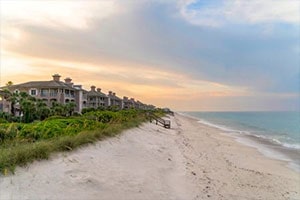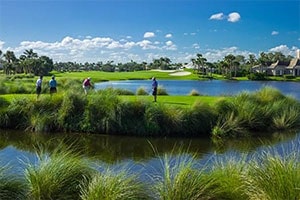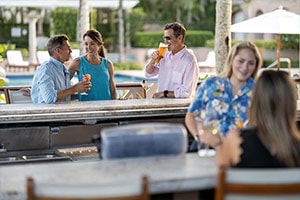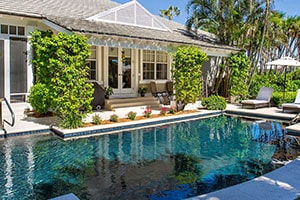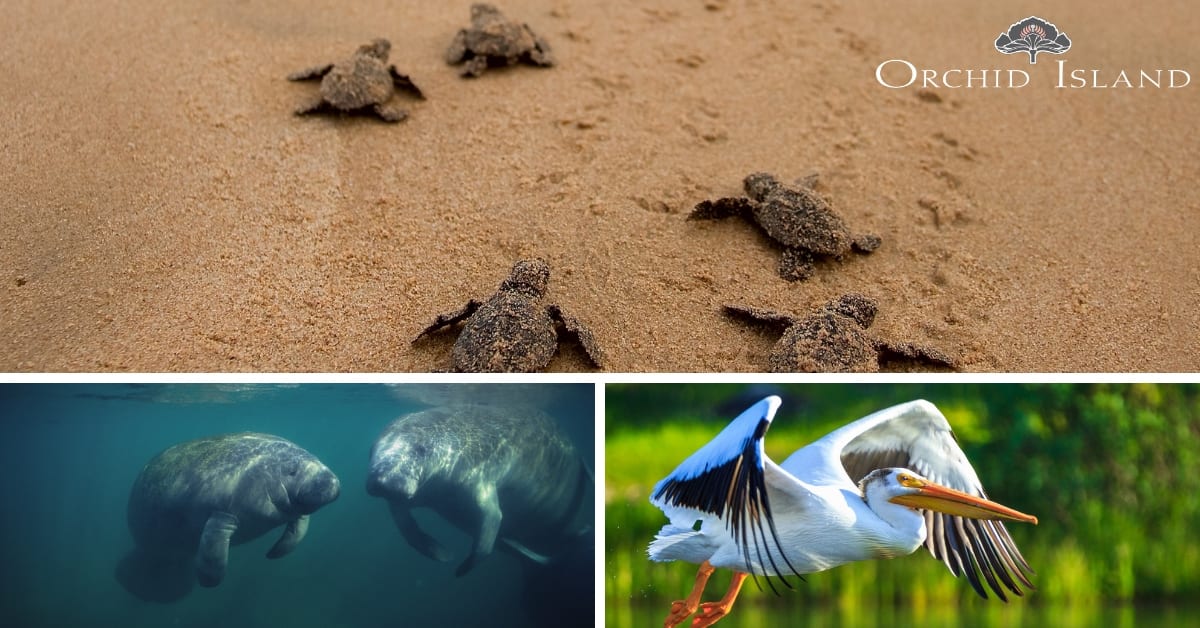What could manatees, American white pelicans, and loggerhead sea turtles all have in common? At first glance, these animals don’t seem to have many similarities at all. One lays its eggs on the beach, one swims in the water, and one flies in the air. As it turns out, that these animals have much more in common than it seems!
They Love The Water
This is the obvious one. Manatees and loggerheads live their lives in the water. In fact, the turtles don’t really leave the water except to lay their eggs. Did you know that turtles return each year to the same beach where they were born to lay their eggs? American white pelicans stick close to brackish water, a mix of fresh and salt water. Places like red mangroves and rivers are popular for them. To catch their meals, they can be seen corralling fish into an area and then plunging their bucket-like bills into the water. The closer that you are to the water, the more likely that you’re able to spot these animals!
They’re Protected
While loggerhead sea turtles, American white pelicans, and manatees are considered beautiful and important parts of Florida’s ecosystem, they’re also ecologically sensitive. Because of this, lawmakers and residents have worked so that certain protections ensure the safety of these animals. At Orchid Island, this can include everything from setting up special lights on the Beach Club so that baby sea turtles can’t see them to let scientists and conservationists know when a rare species has taken up residence in Orchid Island, like the pelicans. This way, we can ensure that these animals come to stay with us for a long time.
They Live at Orchid Island
Orchid Island is designated as a Certified Cooperative Audubon Sanctuary. That means that the staff and residents of the Club work to preserve the natural environment. Because of that, usually rare animals such as American white pelicans are known to migrate here. They are often seen flying over the golf courses from November through March. Manatees float placidly down the river around this area. They’re drawn to the naturally warm waters. Our beaches are some of the best and most popular nesting grounds for the loggerhead sea turtles. During peak season, their nests are marked off to protect the eggs from beachgoers. Next time that you pay a visit to Orchid Island, keep a close lookout-you may never know what you might see!
For those who want to get close to nature and enjoy the creature comforts of home, the Orchid Island Golf & Beach Club amenities are second to none. Orchid Island works hard to preserve a way of life for, not only the natural neighbors who live on the Treasure Coast, but the residents as well. Members and residents also enjoy the one-mile of private beach access and what’s even better, Orchid Island spans from the Atlantic Ocean to the Indian River.
This private community is committed to providing a level of service that stands out from the rest. Golfing here is unparalleled, as the Arnold Palmer designed, 18-hole course is not only renowned among courses, but also holds an Audubon Certified Sanctuary status for its commitment to natural preservation.
Love the Vero Beach location? Request the inaugural issue of Orchid Island Lifestyles Magazine here to learn more about the Vero Beach area and how nature coexists with the residents.
If you’re in the area, stop by the Orchid Island Sales Center and see the community’s beauty for yourself. Call 772. 388.3888 for more information or visit OrchidIslandFL.com.
Luxury residential properties range from the $800s to over $10 million and include custom estate residences, courtyard homes, cottage, or oceanfront condominiums.
Orchid Island Golf & Beach Club (OIGBC) and the Environmental Learning Center (ELC) have different landscapes when it comes to business, but they have one big thing in common: they care about the environment and its effect on wildlife. With both located between the Indian River Lagoon and the Atlantic Ocean, there is no denying the beauty that surrounds them. The Indian River Lagoon is known as one of the most biodiverse estuaries in North America. It is bordered by the Atlantic Ocean with all its marine life, including many species of migratory whales, making it an ecologically important area.
The mission of the ELC is “to educate, inspire and empower all people to be active stewards of the environment and their own well-being.” This mission ties into OIGBC’s environmental stewardship as part of its commitment as a Certified Audubon Cooperative Sanctuary. Since 2005, the Club has achieved and maintained this distinction through a high degree of environmental quality in the following categories: environmental planning, wildlife and habitat management, outreach and education, chemical use reduction and safety, water conservation and water quality management.
The common thread between OIGBC and the ELC is their connection with nature. Protection and conservation come naturally as they both take extra steps daily to make sure that their green spaces are sensitive to wildlife, so they can thrive. The ELC is a 64-acre lagoon island nature center with a strong focus on connecting people with nature, conservation education and leadership, research and the importance of being outside in nature for human health. The ELC is a sanctuary for the habitat and wildlife of the Indian River Lagoon. As neighbors, OIGBC and the ELC have much in common and are leading the charge to be active leaders, conservation innovators and educational stewards of the lagoon. A portion of the proceeds raised from the 2018
U.S. Senior Women’s Amateur Championship will be directly used to continue to educate children and adults about environmental science and conservation stewardship and to create new nature experiences at the ELC.
The ELC and the OIGBC are also active conservationists, doing innovative programs like water recycling, bird nest monitoring, wildlife education and more. “We’re excited to learn from each other as conservationists of our Indian River Lagoon and as neighbors,” said Molly Steinwald, ELC executive director. “We’re so grateful to have been chosen as the designated charitable beneficiary of the Championship and we truly look forward to more collaborations with such a wonderful like-minded organization.”
As a part of the conservation and lagoon stewardship theme, Orchid Island’s golf superintendent, Matt Boyd, uses “best management practices” that are good for the environment as well as being cost-effective. Matt shared that many golf courses, like Orchid Island, partake in being environmentally conscious, and they’re the green spaces that no one really thinks about. “We’re not just a golf course, we’re a sanctuary, because green spaces are limited and Orchid Island is being very active in the protection and preservation of green spaces,” said Boyd. Wildlife is naturally attracted to areas that provide a healthy habitat and clean water. One way OIGBC keeps its water clean is by using natural methods instead of pesticides and toxic chemicals to treat the golf course. Matt also maintains no-spray buffer zones around all the lakes on the property, with deep-rooted vegetation, 4-5 inches tall. These buffers help with the color of the water, which shades the penetration of light and is beneficial for aquatic vegetation and fish.
Some other innovative projects Orchid Island has done to maintain its Audubon Certification include water recycling, water conservation including reuse of stormwater runoff, a recycling program, a birding trail for education and outreach, a butterfly garden, and fish stocking in the golf course lakes.
Celebrating its 30th anniversary, the ELC has a big vision for the next 10 years. Already being an Audubon Certified Wildlife Habitat and holding Green Globe certifications for some campus buildings, ELC’s master plan includes adding more visitor experiences, including a new multiuse interpretive center, a butterfly pavilion and pollinator garden, and an education and events pavilion including an area for special private-occasion rentals or ELC-sponsored events. Also included will be a teaching shade house including a horticultural therapy classroom, children’s nature fun zone and more unique nature experiences for all ages from children to senior adults.
With the ELC’s major focus on driving the message home that we’re all in this together locally and globally to be the solution to environmental concerns for the betterment of our lives and our world, OIGBC couldn’t have chosen a more perfect charity beneficiary for the U.S. Senior Women’s Amateur Championship.
One Beachside Drive, Town of Orchid
Vero Beach, FL 32963
Club: 772-388-2350
Real Estate: 772-388-3888
© 2024 Orchid Island. All Rights Reserved.
Developed by Cotton & Company | Sitemap 

